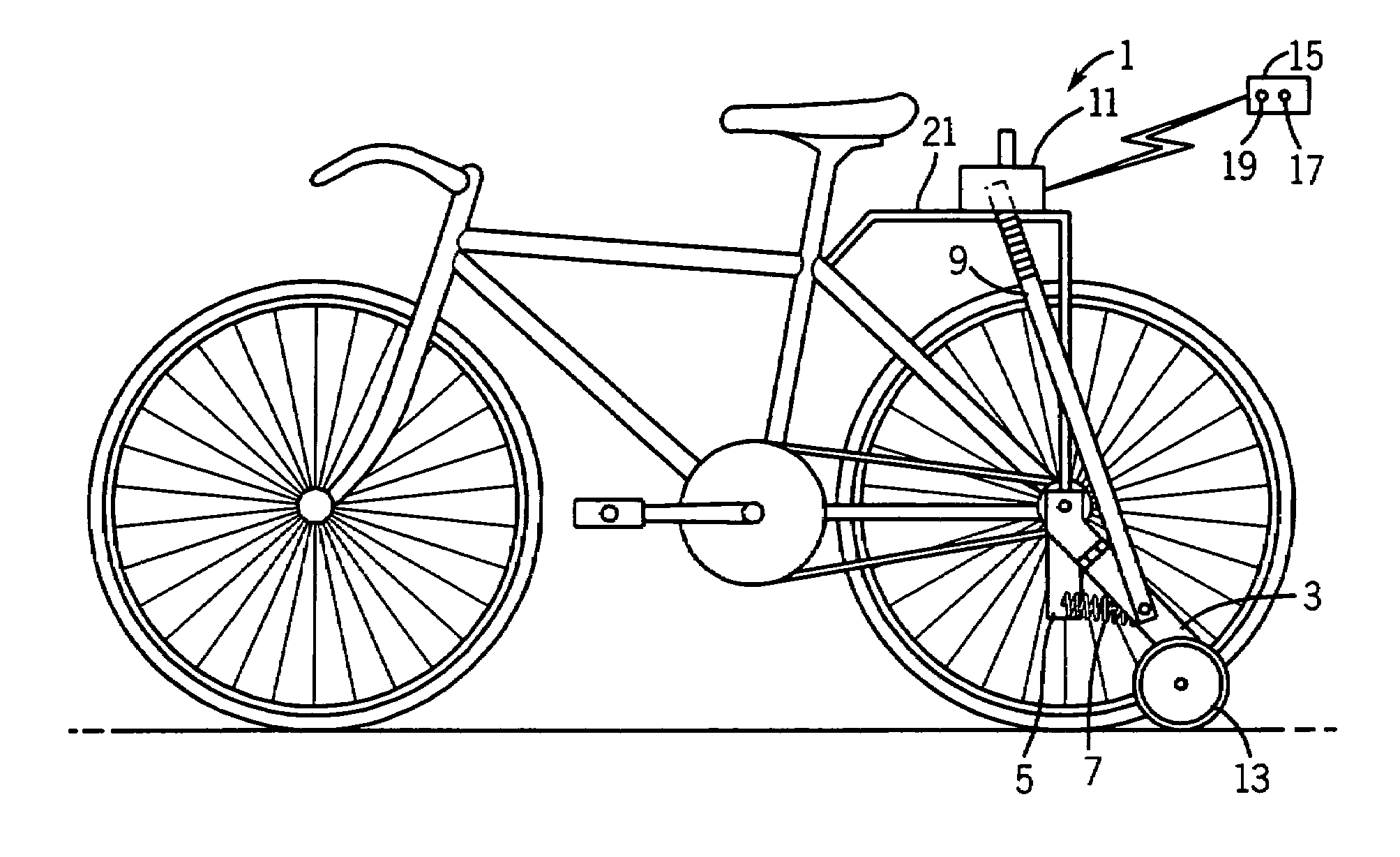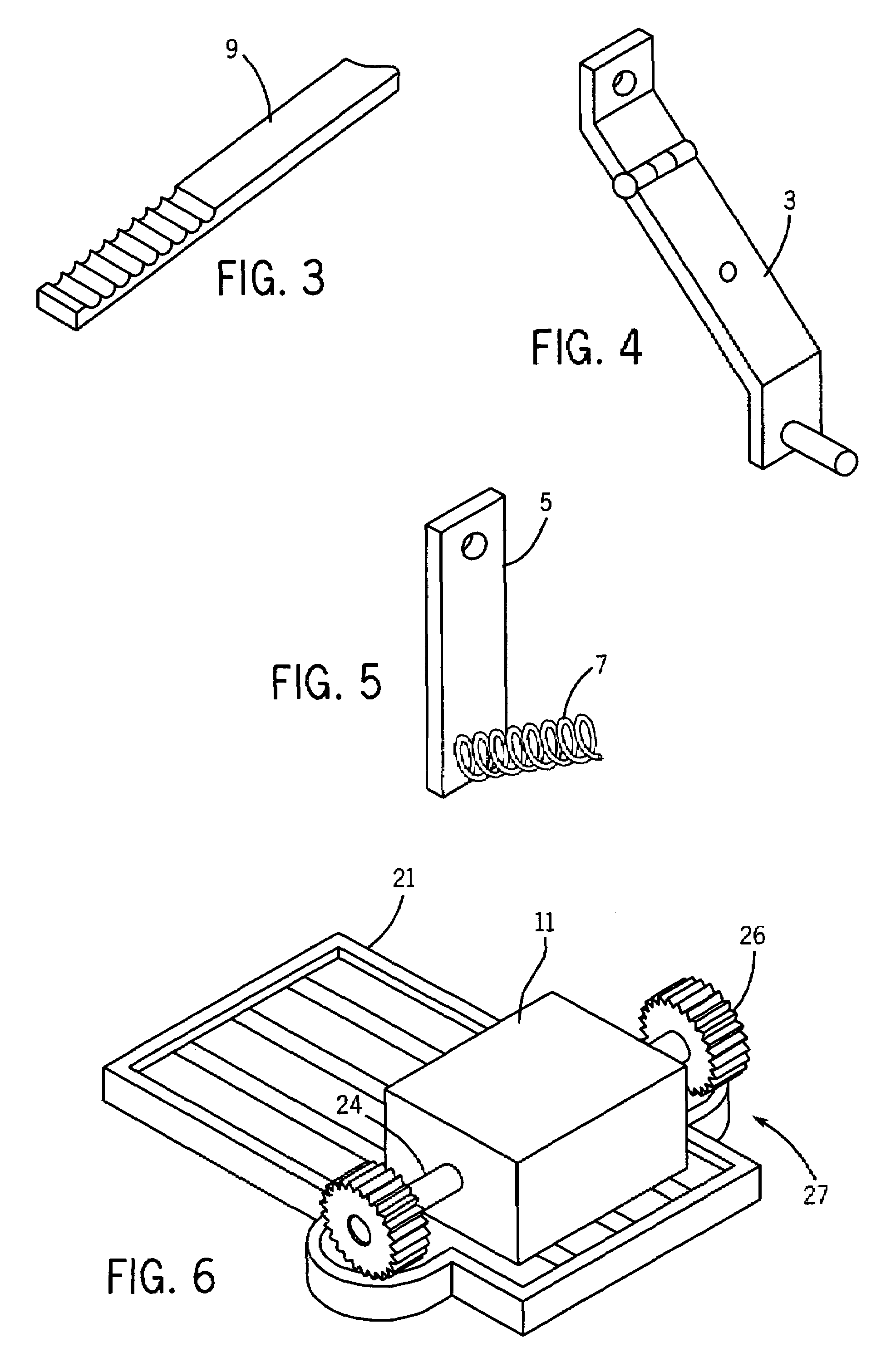Bicycle training aid with dynamically deployable balancing features
a bicycle and dynamic technology, applied in the field of bicycle training aids with dynamically deployable balancing features, can solve the problems of more difficult for a light-weight child to balance on the bicycle, difficult to simply steer the bicycle let alone, and the child who has not yet learned how to ride a bicycle is limited in their ability to apprecia
- Summary
- Abstract
- Description
- Claims
- Application Information
AI Technical Summary
Benefits of technology
Problems solved by technology
Method used
Image
Examples
second embodiment
[0046]FIG. 11 shows a flywheel assembly that attaches to the rear wheel hub 110 by way of a coaxial drive shaft 113. The outer portion of the coaxial drive shaft (see e.g. FIGS. 13A and 13B) remain fixed so that a nut may be placed on threaded ends thereof for holding the rear wheel in place. Within the coaxial drive shaft 113, a rotating drive shaft 119 rotates with the rear wheel. This drive shaft engages one-way drive teeth on an inner rim 117 of the flywheel 115. The outer portion of the drive shaft 119 includes teeth 119a (see FIG. 14) that engage the one-way drive teeth 117 on the inner rim of the flywheel.
[0047]The one-way drive teeth 117 of the flywheel are made to engage the drive shaft teeth 119a such that when the drive chain of the bicycle is used to drive the rear wheel, some of the power from the drive chain is transmitted to the drive shaft 119 for spinning the flywheel 115. As the child pedals faster, the rate of spinning of the flywheel increases, thereby increasing...
PUM
 Login to View More
Login to View More Abstract
Description
Claims
Application Information
 Login to View More
Login to View More - R&D
- Intellectual Property
- Life Sciences
- Materials
- Tech Scout
- Unparalleled Data Quality
- Higher Quality Content
- 60% Fewer Hallucinations
Browse by: Latest US Patents, China's latest patents, Technical Efficacy Thesaurus, Application Domain, Technology Topic, Popular Technical Reports.
© 2025 PatSnap. All rights reserved.Legal|Privacy policy|Modern Slavery Act Transparency Statement|Sitemap|About US| Contact US: help@patsnap.com



